February is a magical time to visit Korea, where winter's chill seamlessly blends with vibrant cultural experiences and delicious seasonal delicacies. From the lively streets of Seoul to the picturesque landscapes of Gangjin, there's so much to explore.
Indulge in mouth-watering dishes like budae-jjigae and sweet roasted gungoguma, and partake in unique festivals such as the Daege Festival and the Celadon Festival. Whether you're hitting the slopes at Vivaldi Park Ski Resort or enjoying the beauty of Pocheon Art Valley with its stunning views and fruit picking, Korea in February promises a mix of adventure and tradition.
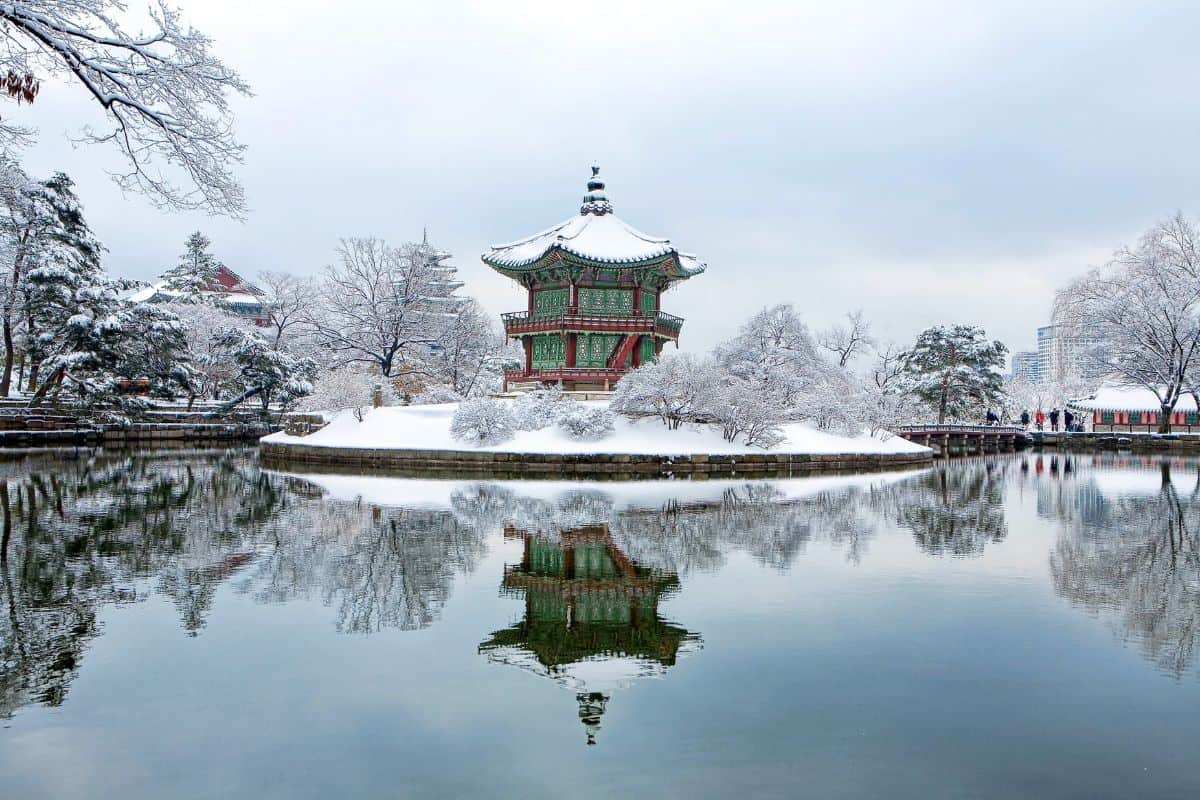
Jump to:
- ❄️February Weather in Korea
- 👨👩👧👧 Crowd and Costs in Korea in February
- 🧥 What to Wear in Korea in February
- 🗺️ Places to Visit in Korea in February
- 🎊 Korean Festivals in February
- 📝 Korean Public Holidays in February
- 😋 Korean Foods to Try in February
- ✏️ Korea Itinerary for February
- 🎫 Exclusive Winter Tours for February
- ❓ Frequently Asked Questions
- 💬 Comments
❄️February Weather in Korea
In February, South Korea is in the grip of winter, with Seoul experiencing chilly weather perfect for winter lovers. Average temperatures range from 39°F (4°C) to 19°F (-7°C), so you should bundle up in warm clothes.
Early in the month, the skies are mostly clear, offering sunny days ideal for sightseeing, though it can be quite cold. As the month goes on, temperatures warm slightly, bringing some clouds, rain, and light snow.
For those into winter sports, the snowy peaks in the northeast are still great for skiing in February, with plenty of snow at resorts. Meanwhile, the southern islands offer a warmer escape, with temperatures in the mid-to-high 40's°F.
This variety in weather lets travelers pick their winter adventure—whether skiing in the mountains or enjoying the milder coastal areas—making February a fun time to explore all that Korea has to offer.
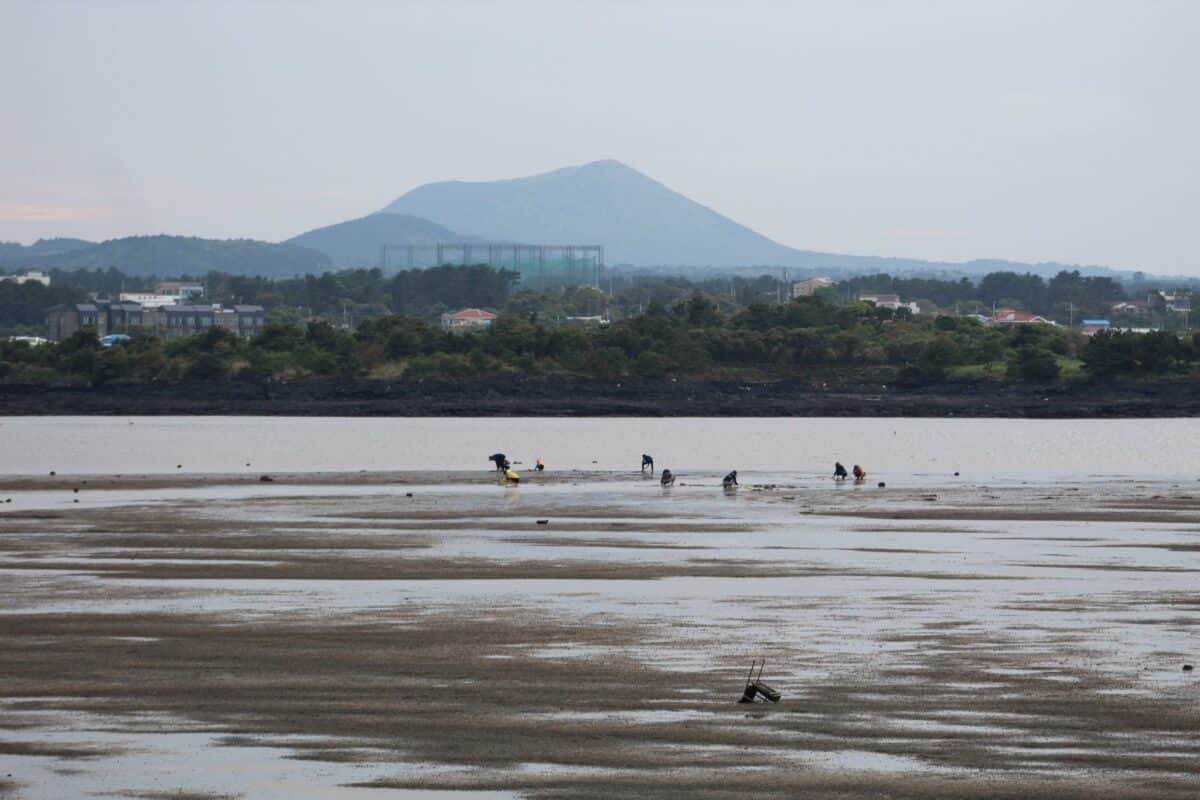
👨👩👧👧 Crowd and Costs in Korea in February
February in South Korea is a great time for travelers looking for a quieter and cheaper experience. With fewer tourists during the winter, you can explore Seoul without the crowds that come with the cherry blossoms in spring or summer holidays.
Many attractions are less busy, and you’ll find lower prices on flights and accommodations, making it perfect for budget travelers.
However, during the Korean New Year (Seollal), which usually falls at the end of January or early February, many South Koreans travel home. This can lead to crowded trains and busy roads, and some shops and attractions may close for the holiday.
Even though it's the low season for regular tourism, February is a prime time for winter sports fans. Ski resorts near Seoul are popular, benefiting from the good snowfall. While the slopes can get lively, some resorts limit daily visitors.
To enjoy skiing fully, it's best to arrive early and book your accommodations in advance for longer stays. With a mix of cultural celebrations and exciting outdoor activities, February in South Korea is great for those ready to embrace the winter chill!
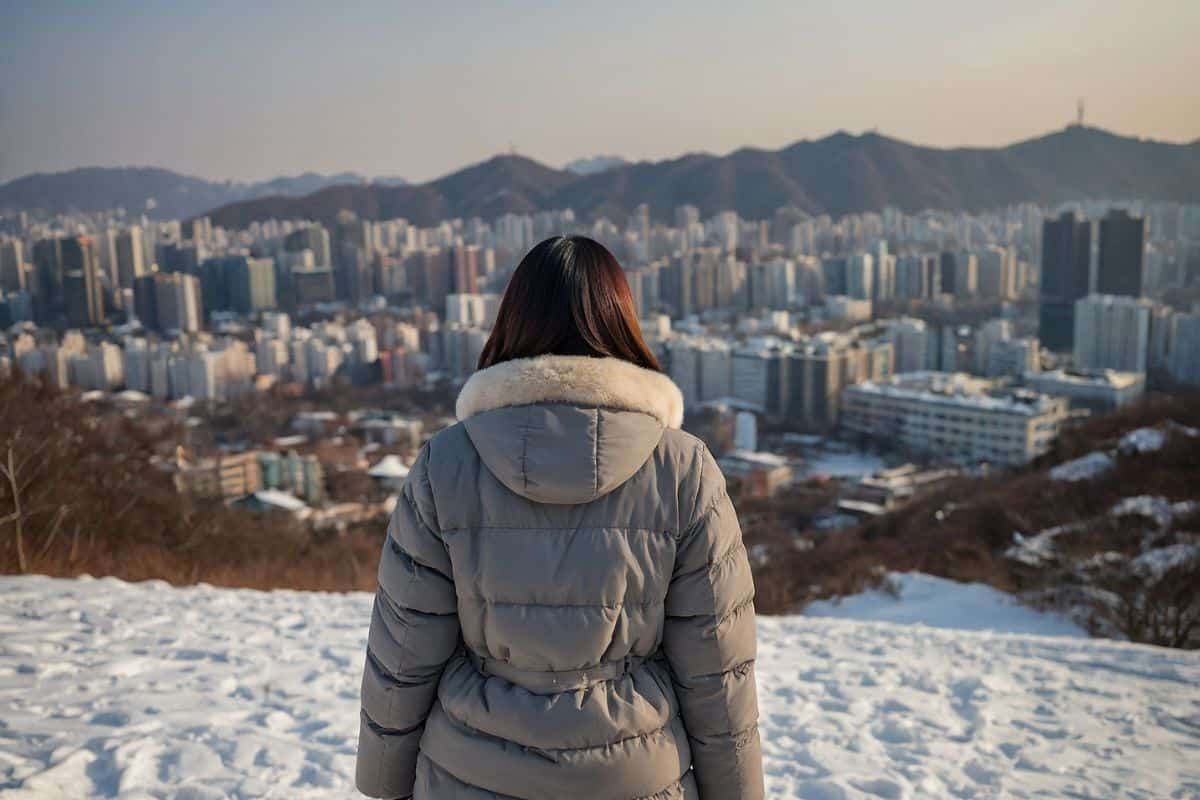
🧥 What to Wear in Korea in February
When preparing for your trip to South Korea in February, make sure to pack the following essential items to keep warm and comfortable:
- Heavyweight Winter Coat: A well-insulated, padded parka to shield against the cold and wind.
- Layers: Thermal and HeatTech inner layers trap warmth, along with long-sleeved shirts, sweaters, and cardigans.
- Accessories: Hats and scarves to protect your extremities from harsh winds and keep you warm.
- Warm Pants: Fleece-lined leggings or thick tights and comfortable pants are ideal for layering.
- Footwear: Waterproof winter boots for outdoor activities and comfortable running shoes for city exploration.
- Praka: Traditional Korean coats made from sheepskin, perfect for staying warm while immersing yourself in the culture.
- Hand and Feet Warmers: Disposable heating pads placed in your pockets or shoes are great for extra warmth on colder days.
🗺️ Places to Visit in Korea in February
Samnangseong Fortress
Once known as Jeongjoksanseong Fortress, Samnangseong Fortress is rich in history and was possibly built even before the Goryeo Dynasty. Legend says it was constructed by Dangun's 3 children, linking it to Korea's mythical past.
While the exact date of its construction is unclear, its style resembles other fortresses from the Three Kingdoms Period, like Samnyeonsanseong in Boeun and Myeonghwalsanseong in Gyeongju.
By 1259, a palace was built inside its walls, and the fortress underwent various restorations, including significant upgrades during King Yeongjo's reign in 1739, which added the impressive Jonghaeru gate tower at the southern entrance.
Walking through Samnangseong Fortress allows you to walk through a historic landscape, though notably, during the French Invasion of Ganghwa in 1866, the fortress played a vital role in defending against about 160 French soldiers who tried to breach its east and south gates.
While many structures, like Seonwonbogak Hall, which held royal family records, are no longer there, the remains of Jeondeungsa Temple stand strong, symbolizing the fortress’s rich past. Visitors can enjoy hiking trails and beautiful views of the snow-covered landscape in winter.
Bukchon Hanok Village
Nestled between Gyeongbokgung Palace, Changdeokgung Palace, and Jongmyo Shrine, Bukchon Hanok Village offers a glimpse into Korea's architectural heritage.
This charming neighborhood is home to hundreds of traditional hanok houses from the Joseon dynasty. The name "Bukchon" means "northern village," reflecting its location north of Cheonggyecheon Stream and Jongno district.
Visitors can wander through narrow streets, admiring the well-preserved roofs and wooden structures that tell stories of the past. Today, Bukchon is not just a museum but a lively community with cultural centers, hanok guesthouses, cozy restaurants, and tea houses.
Travelers can enjoy local dishes and peaceful tea ceremonies. However, since Bukchon is a residential area, it's important to be respectful of the locals while exploring. Balance your curiosity with respect and you're likely to have a rewarding experience with both the historical and modern life of this unique place.
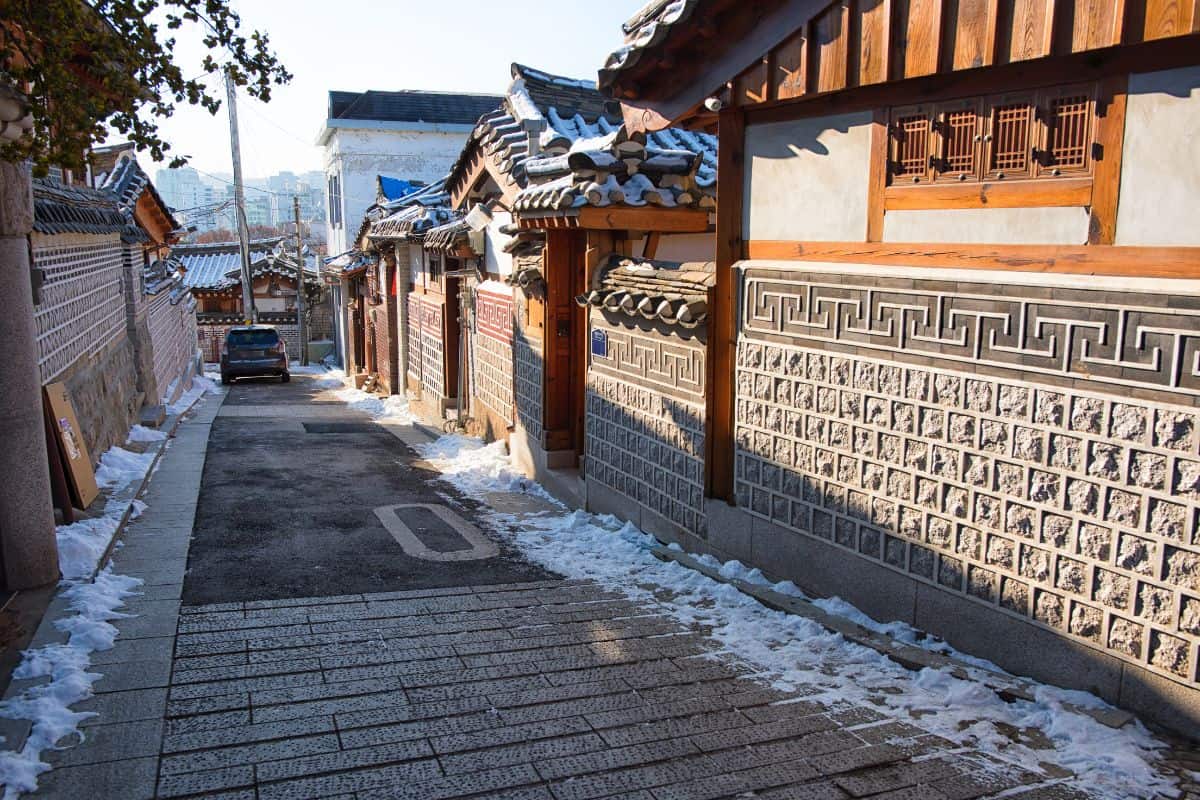
Seoul Plaza Ice Skating Rink
Opened in 2004, Seoul Plaza is located next to Seoul City Hall and looks like a full moon. This lively public space is not just a meeting spot; it’s a cultural hub that hosts various events, such as concerts and exhibitions, for both locals and tourists.
Every winter, the plaza turns into a fun outdoor skating rink, drawing in people ready to enjoy the chilly season. With rinks for beginners and advanced skaters, it’s a great place for everyone to have fun on the ice.
Visitors will find helpful facilities, including skate rentals and rest areas, making their time comfortable. Spectators can enjoy the vibrant atmosphere from designated spots around the rink. Skaters must wear gloves for safety, though the plaza offers a training program for beginners who want to learn.
Garden of Morning Calm
Just over 40 kilometers from Seoul, the Garden of Morning Calm spans more than 300,000 square meters and features a beautiful variety of gardens. Visitors can see many types of plants, including rare and endangered species, making it a must-visit for nature lovers.
With over 600,000 guests each year, it’s one of South Korea's top tourist spots. The stunning landscapes are perfect for a relaxing walk, letting you enjoy the peace and beauty of nature.
Winter is a magical time to visit during the Garden's famous Lighting Festival. This unique event combines the garden's natural beauty with amazing light displays. From December to March, the festival lights up with eco-friendly LED lights, turning the gardens into a winter wonderland.
Guests can enjoy the beautiful lights that highlight the landscape, creating an unforgettable experience. If you're planning a trip, don't miss the Lighting Festival—it's a wonderful way to celebrate the beauty and festive spirit of the place.

Vivaldi Park Ski World
Vivaldi Park Ski World attracts ski lovers with its one-day and nighttime skiing options, catering to a diverse range of winter sports enthusiasts. The resort features large accommodation facilities, including comfortable condos that provide direct access to the ski slopes, adding convenience to skiing.
With 12 ski slopes suitable for all levels of expertise, from beginners to advanced skiers, guests can easily find their perfect run. The resort also boasts of a gondola and ten ski lifts, ensuring efficient transportation to various slopes.
After a day on the slopes, guests can unwind in the cozy lodges or enjoy apres-ski activities in the lively resort atmosphere. Whether you're hitting the snow during the day or under the stars, Vivaldi Park Ski World promises an unforgettable winter adventure.
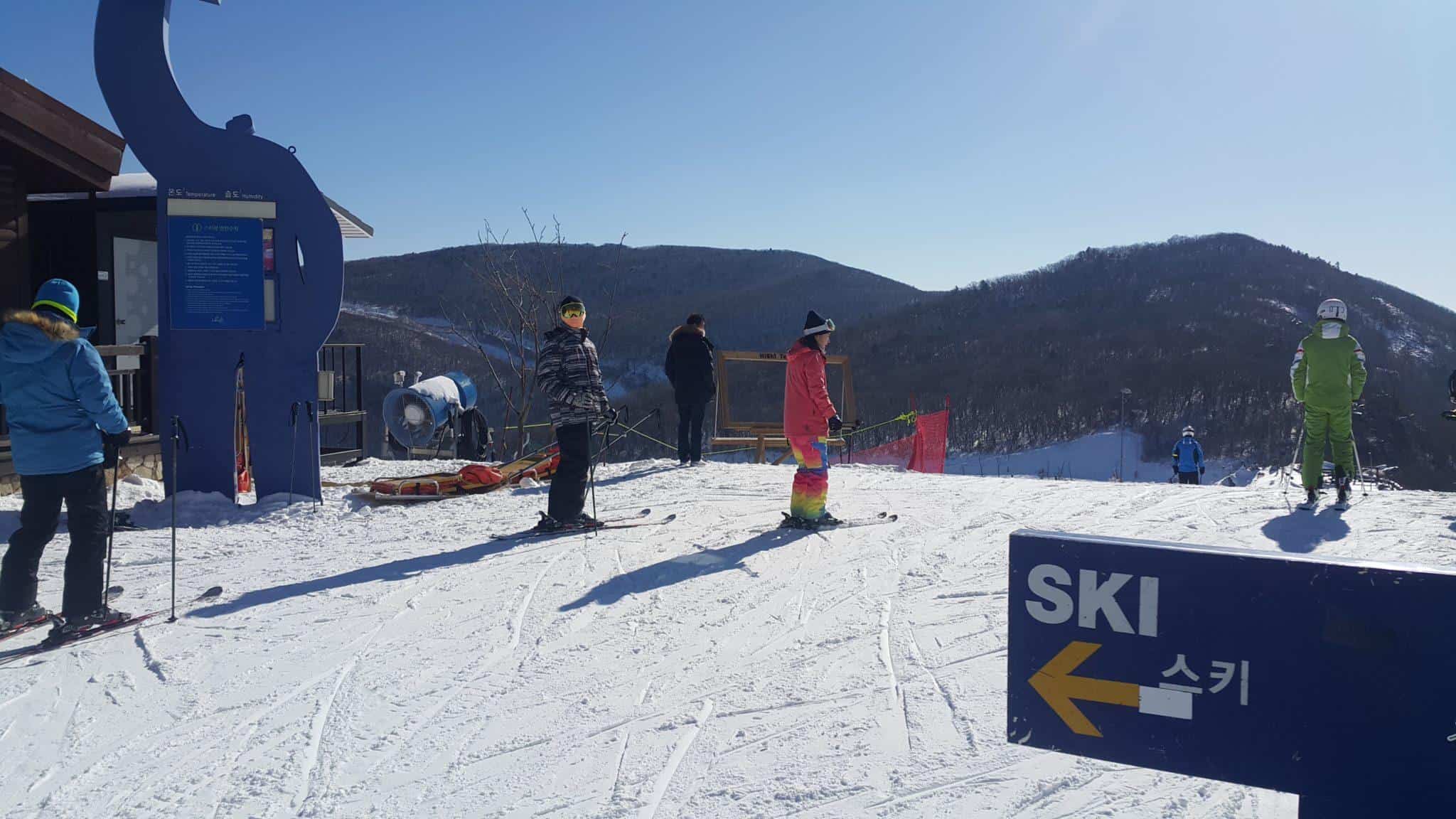
Lotte World Adventure Seoul
Lotte World Adventure Seoul is an exciting theme park with both indoor and outdoor areas. Located in the heart of Seoul, it’s easy to reach via the Seoul Subway at Jamsil Station (exit 4).
Surrounding the park, you'll find Lotte shopping malls, hotels, and other attractions, making it a great place for a fun-filled day. Whether riding thrilling rides, enjoying live shows, or just soaking in the atmosphere, Lotte World Adventure Park offers an unforgettable experience for everyone.
The outdoor area features exciting roller coasters and themed zones, while the indoor section has climate control for year-round fun. Visitors can easily explore the park and enjoy various dining options, shops, and activities, making it a great family-friendly destination.

🎊 Korean Festivals in February
Yeongdeok Daege Festival
The Yeongdeok Daege Festival is held in the lovely Daege Crab Village, known for its beautiful views where the mountains meet the sea. This area has a rich history, and it has been famous for its daege crabs since the Goryeo Dynasty. At the festival, visitors can dive into local culture and enjoy delicious dishes featuring these special crabs.
The village has many restaurants serving tasty meals that highlight Yeongdeok's famous seafood traditions. Guests can also explore the stunning scenery that makes Yeongdeok a great place to visit. With its mix of culture and natural beauty, the Yeongdeok Daege Festival offers a wonderful experience for anyone wanting to enjoy local customs and tasty seafood.
Gangjin Celadon Festival
The Gangjin Celadon Festival, located in a region famous for its celadon pottery for over 5 centuries, invites travelers to experience the art of traditional Korean ceramics. This lively event celebrates celadon, a type of pottery that is both beautiful and functional, attracting art lovers and culture enthusiasts.
Visitors can participate in hands-on activities to learn about the craft and appreciate how these beautiful pieces are made. The festival features various exhibitions, workshops, and demonstrations that share the history of celadon and its importance as both a cultural gem and a practical art form.
From pottery-making classes to displays of stunning celadon artworks, the festival offers a great look into this elegant craft.
📝 Korean Public Holidays in February
Lunar New Year's Day, known as Seollal, is one of the most significant traditional holidays in South Korea. It marks the beginning of the lunar calendar and typically falls in late January or early February, bringing families together for various customs and festivities.
During Seollal, people engage in rituals such as paying respect to their ancestors through ancestral rites called charye. Additionally, it is common to wear traditional attire known as hanbok, enjoy festive foods like tteokguk (rice cake soup), and participate in traditional games.
The Korean holiday not only fosters family bonds but also reinforces cultural heritage, making it a cherished time for reflection and celebration in Korean society.
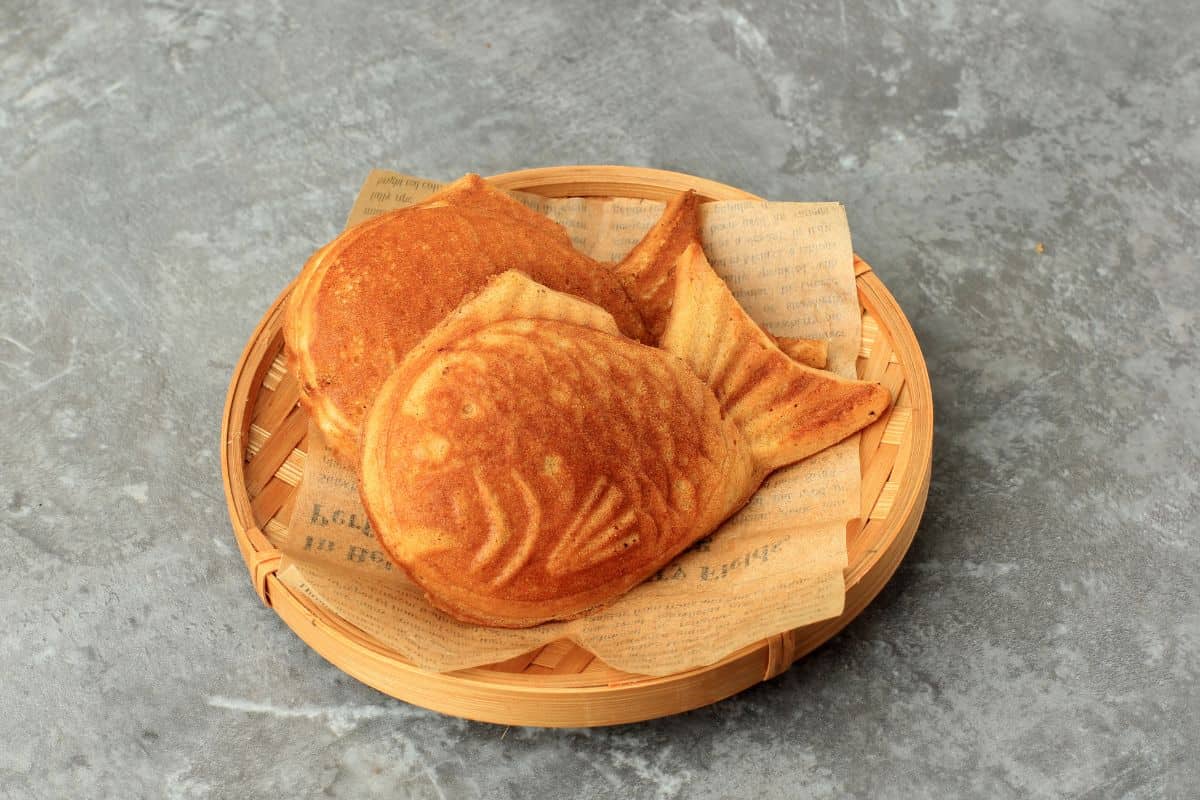
😋 Korean Foods to Try in February
Bungeoppang
Bungeoppang (붕어빵) is a must-try winter snack in Korea! This fun street food, which means "crucian carp bread," is made right in front of you, adding to the experience. Shaped like a fish, each bun is filled with sweet red bean paste that’s delicious. Despite its name, there’s no fish in it—just a tasty dessert perfect for chilly days.
As you walk through busy markets or lively streets, the warm smell of fresh bungeoppang will catch your attention. It's more than just a snack; it’s a chance to enjoy and connect with local foods. You’ll find the soft, sweet filling inside when you bite into the crispy outside, perfect whether you’re warming up after winter fun or soaking in the festive vibe.
Gungoguma
Grilled Korean sweet potatoes, known as gungoguma (군고구마), are a popular winter treat. These sweet, roasted potatoes are sold from food carts and are perfect for warming up on a cold day. They have a slightly caramelized flavor, making them an irresistible snack, especially for little ones.
Not only do they taste great, but gungoguma also has numerous health benefits. They’re high in fiber and contain antioxidants that help boost your immune system and keep ypu healthy during the winter months.
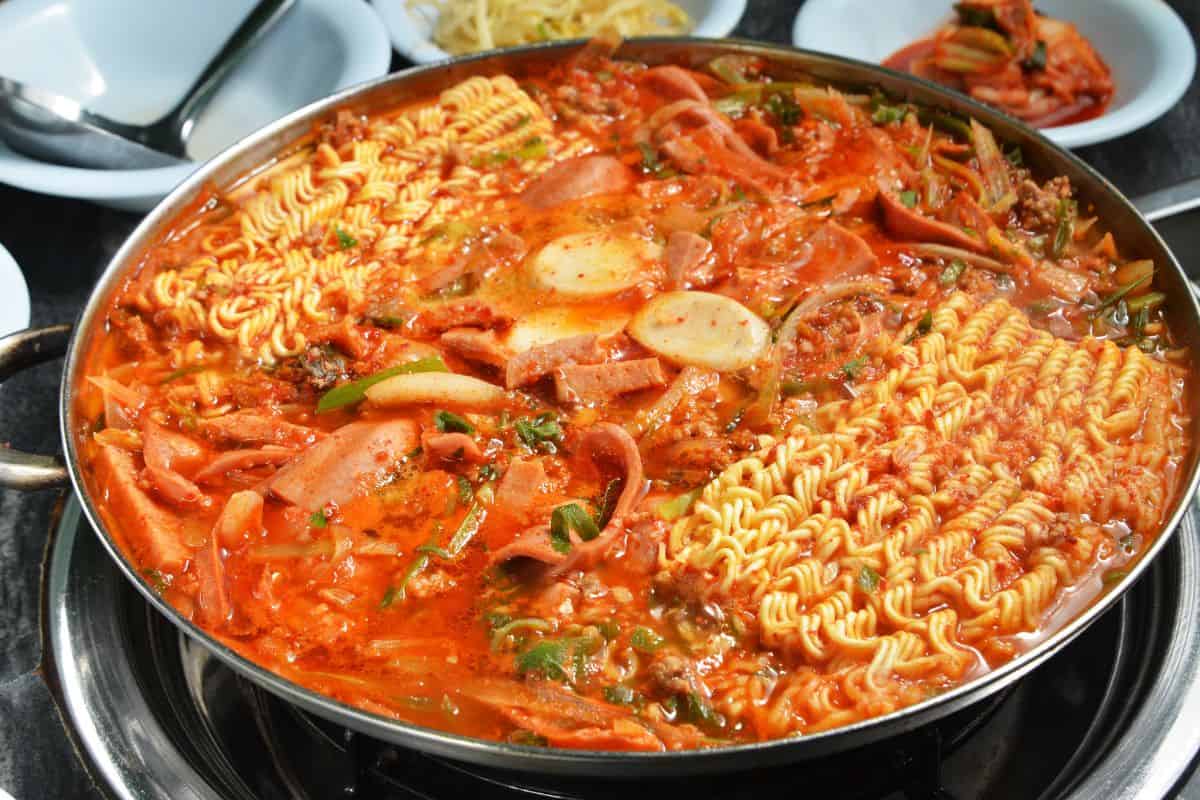
Budae-Jjigae
Budae-jjigae, or Korean Army Stew, is a tasty dish with a fascinating history from the Korean War. During tough times, food was hard to come by, and people creatively used whatever scraps they could find, often mixing in items from American soldiers.
This led to a unique blend of flavors, with spam and American cheese as key ingredients, showing how necessity can inspire some pretty great cooking (those are still popular toppings for ramen these days).
If you're visiting Korea this winter, budae-jjigae isn’t just a meal; it’s a piece of history. This comforting stew is filled with delicious ingredients like hearty sausages, chewy rice cakes, and instant noodles, all simmered in a rich broth that warms you up.
✏️ Korea Itinerary for February
Day 1: Arrival in Seoul
On the morning of your arrival, you'll land at Incheon International Airport and take the Airport Railroad Express (AREX) to Seoul Station to get from Incheon to Myeongdong. Once you arrive, check into your hotel and enjoy a delicious lunch at a nearby Korean BBQ restaurant.
In the evening, head over to downtown Myeongdong for some shopping and street food. Be sure to try bungeoppang and gungoguma from local vendors to make the most of your culinary experience.
Day 2: Cultural Exploration
Start your day with a visit to Bukchon Hanok Village, where you can stroll through traditional Korean houses and soak in the culture. Don't forget to stop for lunch at a local cafe to recharge. Your evening will likely be filled with Seollal festivities; join in on a traditional game or workshop, and savor tteokguk at a local restaurant.
Day 3: Festivals and Local Flavours
Travel to Yeongdeok in the morning to experience the Daege Festival. There you can participate in seafood tastings and engage in local cultural activities that celebrate the region.
After an exciting morning, visit local restaurants in the afternoon to try delicious dishes made with daege crabs, all while enjoying the stunning coastal scenery. In the evening, return to Seoul, unwind, and enjoy dinner at a local restaurant if you still have room (otherwise take a stroll through one of the popular Seoul neighborhoods, like Hongdae or Gangnam).
Day 4: Gangjin Celadon Festival
On the morning of Day 4, depart for Gangjin for the Celadon Festival. Participate in pottery-making classes and demonstrations to gain a hands-on experience of this traditional craft. In the afternoon, explore exhibitions showcasing celadon art and its rich history.
Be sure to grab a light lunch featuring local specialties. After a fulfilling day, return to Seoul in the evening, where you can unwind at your hotel or continue exploring street food options in Insadong.
Day 5: Culinary Journey and Departure
Begin your final day with a hearty Korean breakfast and visit a traditional market to find some souvenirs. For lunch, indulge in a bowl of budae-jjigae, the heartiest dish for a winter meal.
As your trip ends, prepare for your departure from Seoul by taking the AREX back to Incheon International Airport. If time allows, enjoy any last-minute shopping for Korean souvenirs before your flight.
🎫 Exclusive Winter Tours for February
Trazy's Vivaldi Park Ski Resort Tour
If you’re looking for an exciting winter adventure, the Vivaldi Park Ski Resort tour offers a fantastic one-day ski and snowboard tour for thrill-seekers all year round! This daily trip lasts about 12 hours and requires at least one person to book in advance by 9:00 AM KST the day-of.
Participants will meet at Hongik University Station or Euljiro 1-ga Station and then be taken to the snowy fun outside the city. You can rent ski or snowboard gear, get ski clothes and helmets, and even take a one-hour beginner lesson if you want.
With round-trip transport included, you can enjoy the beautiful scenery while feeling safe with the included travel insurance (though always read the fine print).

Trazy's Pocheon Art Valley and Strawberry Farms
For a peaceful winter getaway, join the Pocheon Art Valley tour that mixes nature with local farming. This 11-hour experience runs every Thursday and Sunday, letting you explore the beautiful Pocheon Art Valley and the lovely Garden of Morning Calm, plus enjoying apple or strawberry picking. You must also book a day in advance, such as the ski tour, by 10:00 AM KST.
You can start your trip at Hongik University Station or Dongdaemun History & Culture Park Station, where friendly staff who speak English and Chinese will be there to help. The tour covers entrance fees, fruit picking costs, and round-trip transportation, so you can enjoy the stunning views and hands-on farming and fruit-picking in Korea.
❓ Frequently Asked Questions
While in Korea duting February, be sure to indulge in local delicacies such as gungoguma (sweet roasted potatoes) and budae-jjigae (Korean Army Stew). These dishes not only offer delicious flavors but also reflect the country's rich cultural history.
Yes, February features various festivals, including the Daege Festival in Yeongdeok, where you can enjoy seafood tastings and engage in local cultural activities. Additionally, the Gangjin Celadon Festival offers pottery-making classes and showcases traditional celadon art.
You can join Trazy's Vivaldi Park Ski Resort Tour for skiing and snowboarding near Seoul or the Pocheon Art Valley Tour for a combination of nature exploration and fruit picking. Both tours provide round-trip transport and require advance booking, ensuring an enjoyable experience.

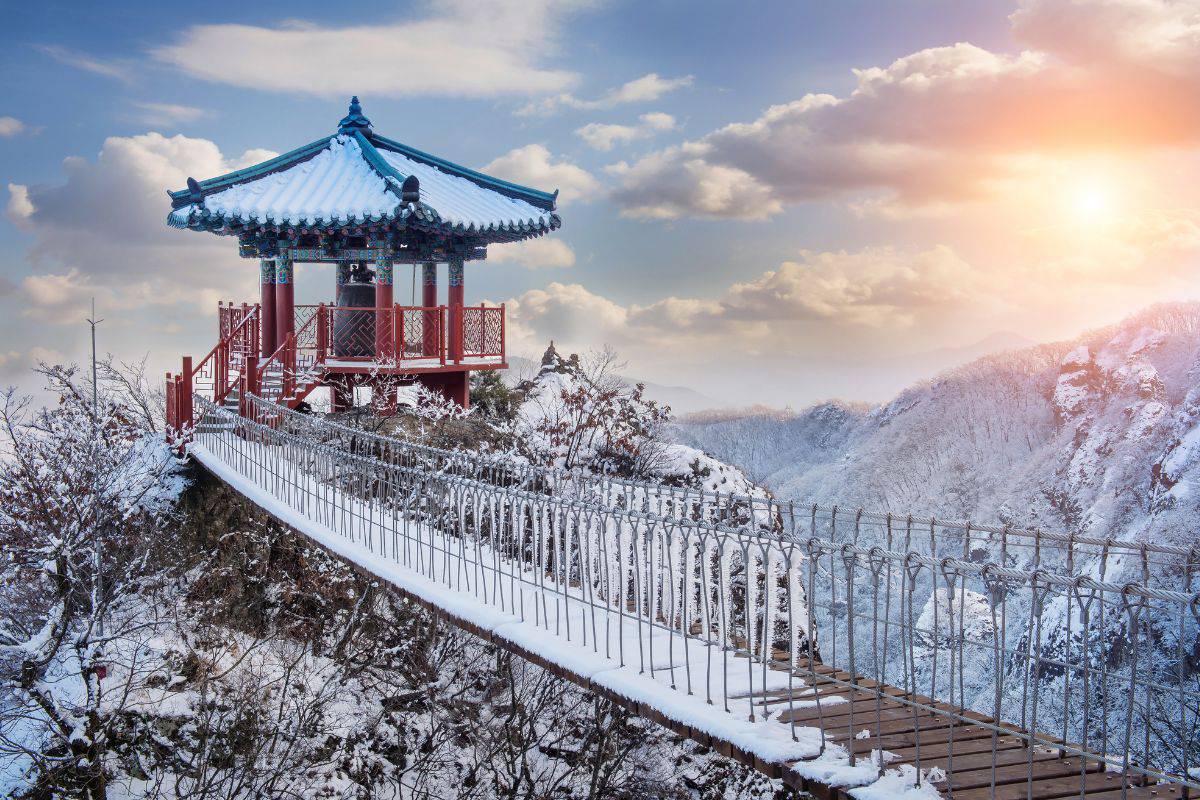
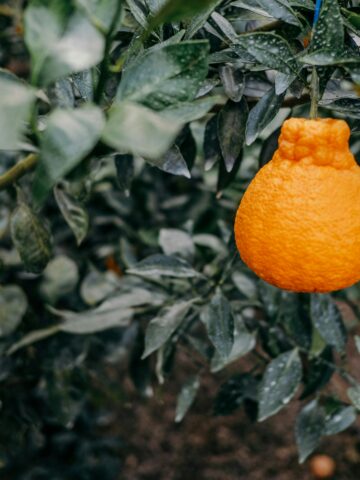

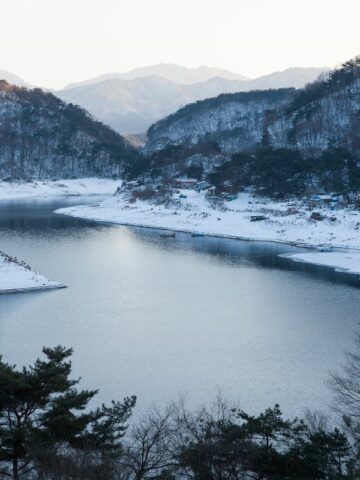
Leave a Reply